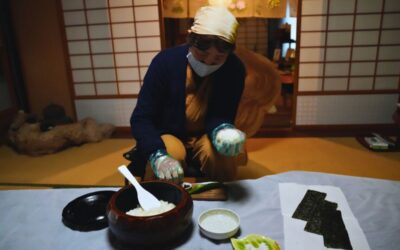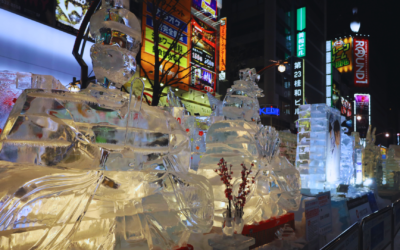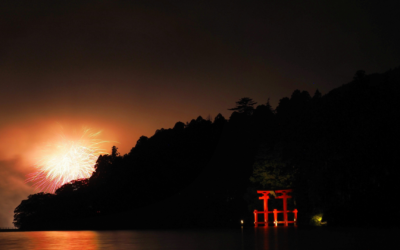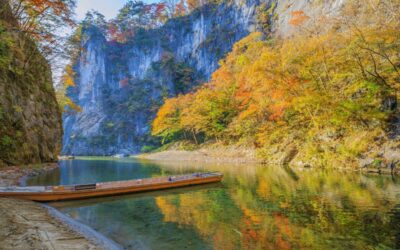Pack your bags and your yen for adventure—Japan is calling!
In a twist of economic fate, the yen is at its lowest in 34 years, making now the perfect moment to check Japan off your bucket list without breaking the bank. Imagine savoring sushi in Tokyo, or soaking in an onsen in Hakone, all the while knowing your dollar stretches further than ever.
But even the best currency exchange rates won’t prepare you for the cultural nuances and logistical details of traveling in Japan. Fret not. This blog has all the things you must know before visiting Japan. From understanding the essentials of handling your luggage in Japan to mastering the various transportation options the country offers, this guide will equip you with everything you need to know.
We’ll ensure that planning your Japan trip is less about guessing and more about enjoying from the moment you step off the plane. So, buckle up; it’s time to explore Japan with confidence and excitement!
Top Things You Must Know Before Visiting Japan

Travel Planning Tips
Alright, let’s kick off with some handy tips to get your trip planning on track before you dive into the excitement.
Tip #1: Understand the Different Weather and Seasons in Japan.
Understanding Japan’s weather patterns and seasonal changes can greatly enhance your trip planning. From cherry blossoms in spring to vibrant foliage in autumn, each season offers unique experiences and requires varying levels of preparation.
- Winter is from December to February. It is the coldest season of the year, which is perfect for enjoying hot springs. Warm clothing, such as scarves, gloves, heavy coats or thick jackets, and thermal layers, are highly recommended to stay comfortable. This is the ideal time to go skiing.
- Spring is generally from March to May in Japan. Light jackets, sweaters, and layers are suitable clothing choices. “Sakura”, or cherry blossoms, are a symbol of spring ni Japan. Many people picnic under sakura trees for “ohanami,” or cherry blossom viewing.
- Summer is usually from July to August. After the rainy season, lasting from June to late July, the temperature rapidly increases. Comfortable and lightweight clothes, such as shorts, and-t shirts are recommended to stay cool. There are many festivals at this time.
- Autumn lasts roughly from mid-September, through October and November. As the weather becomes cooler, it the perfect time to wear light jackets, and sweaters. Many people engage in activities such as momijigari (autumn leaf viewing) in parks and mountains.
Aside from the typical four seasons, there are two other seasons that are unique to Japan.
- Rainy Season from June to July: The rainy season occurs briefly between early June to mid-July, depending on the region.
This period is called “Tsuyu “(also pronounced baiyu in some regions) which translates to “plum rain” as it coincides with the ripening of Japan’s plums. During this time of year, carrying a compact umbrella with you at all times is recommended, as the weather may change quickly.
- Typhoon Season from August to September: Japan experiences a handful of typhoons each year, which bring strong winds and heavy rainfall.
The season lasts from May to October, and peaks during the months of August and September. It just also so happens to have many festivals and events going on. If you are concerned about traveling during the peak months, we recommend visiting northern destinations.
Tip #2: When planning what to wear as you wander around Japan, be sure that you’ll have a small bag or a jacket that would allow you to have your passport at all times. Legally, you need to have your passport with you at all times.
Tip #3: Prepare for the worst by familiarizing yourself with emergency contact numbers in Japan:
- Emergency Call to Police: 110
- Emergency Call for Fire, Ambulance or Emergency Rescue: 119
- Emergency Call to Coast Guard: 118 118
Tip #4: In case of any unexpected situations during your travels, also research in advance where your country’s embassy is located.
Tip #5: To make sure that you don’t miss any extreme weather warnings or evacuation information, bookmark these useful pages:
- Japan Meteorological Agency
- NHK Alarm and Evacuation Advisory
- NHK Weather Forecast
- Evacuation Locations
Tip #6: For those with specific dietary requirements, particularly for vegetarians and vegans, Japan can be challenging due to the relatively limited availability compared to Western countries.
However, most chefs will be happy to accommodate any allergies or dietary needs with a little preparation. Creating a card with information about your dietary requirements in Japanese, which can be shown to restaurant staff, is highly recommended. Find some pre-made cards here.
For a list of vegetarian and vegan restaurants in the area, check out this website. Google Maps is also a great resource to explore the local area. For a list of vegetarian and vegan restaurants in the area, see this useful site. Google Maps is also a great resource to check out the local area.
Tip #7: Know your options when travelling with luggage in Japan. Many travelers to Japan will ride the bullet train (shinkansen) and other long-distance trains throughout their journey.
Recently, the rules on luggage have become stricter, and passengers with oversized luggage are able to reserve special seats depending on the train.
Luckily, as travelers in Japan are accustomed to transferring across prefectures, they have the option to forward or store luggage. Coin lockers are available in stations all over Japan, and some post offices also provide luggage storage services.
We suggest packing carry-on luggage that can easily be stored in the overhead storage space on trains (similar to the overhead compartment of an airplane).
In general, we recommend bringing smaller suitcases for travel within Japan, as navigating busy train stations and city centers can be complicated with very large suitcases, as there are not always elevators or escalators readily available.
Most larger suitcases can be kept in the foot space of your seat; however, this will mean less space to stretch your legs.
Tip #8: If it looks like you’re going to have large luggage, think about opting for luggage forwarding services.
Available all over Japan, a luggage forwarding service is the most convenient
way to send large luggage from one city to another. This option is the most convenient way to get around without worrying about your large luggage and is a safe and secure method for transporting your luggage.
Prices tend to range from 2,000 to 2,500 yen per suitcase with a size/weight limit of around 200cm/30kg, although larger options are also available depending on the service.
You can forward from locations all over Japan, including the airport, convenience store, and delivery service counter (find locations here).
For most central locations in Japan this will take one day if you send your luggage in the morning, therefore it would be best to pack an overnight bag the night before.
In general, we recommend forwarding luggage to your hotel where the staff can speak English and are used to providing the service as it is commonly used among locals as well.
If you do forward luggage from the convenience store, make sure to pay “motobarai” (paying the bill in advance) and please refer to the image below.

Culture and Etiquette Tips
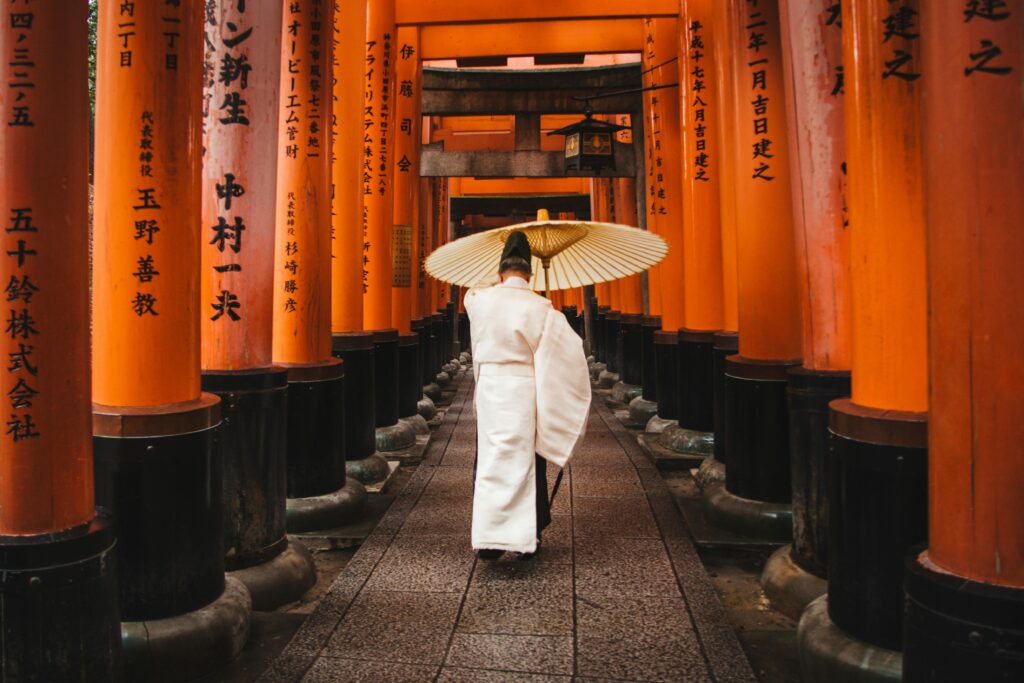
Next, let me dish out handy insights for navigating Japanese customs and traditions.
Tip #9: Tipping is not necessary in Japan, especially at everyday establishments, like restaurants. But hospitality workers, such as hotel staff, bartenders (especially if they have a tip jar), and guides will appreciate them.
Tip #10: Understand the difference between Buddhism and Shintoism, the two main religions in Japan.
Buddhism was brought to Japan from China and India during the Heian Period (794 – 1185), whereas Shintoism originated in ancient Japan, and follows the belief that there are thousands of Gods across the world found in nature. Whilst many Japanese wouldn’t say they are strictly religious, many will perform religious practices from both Buddhism and Shintoism in daily life, such as visiting famous temples and shrines and offering a prayer, or participating in religious festivals known as “matsuri”.
Tip #11: On the same note as Tip #10, be aware of the difference between shrines and temples.
In Shintoism, shrines are places of worship dedicated to “kami”, which are divine spirits or gods believed to inhabit natural elements or ancestors. Shrines typically feature symbolic architecture, such as “torii gates” and pagodas, and are used for rituals, prayers, and offerings to honor and seek blessings from the kami. “Komainu”, or lion dog statues, usually protect the entrance.
A Japanese temple, on the other hand, is a sacred place of worship and reflection typically associated with Buddhism. These temples often feature elegant and intricate architectural designs, including large “sanmon” gates, pagodas, wooden halls, and serene gardens. Temple entrances are usually protected by warrior statues, whilst Buddha statues are typically the object of prayer.
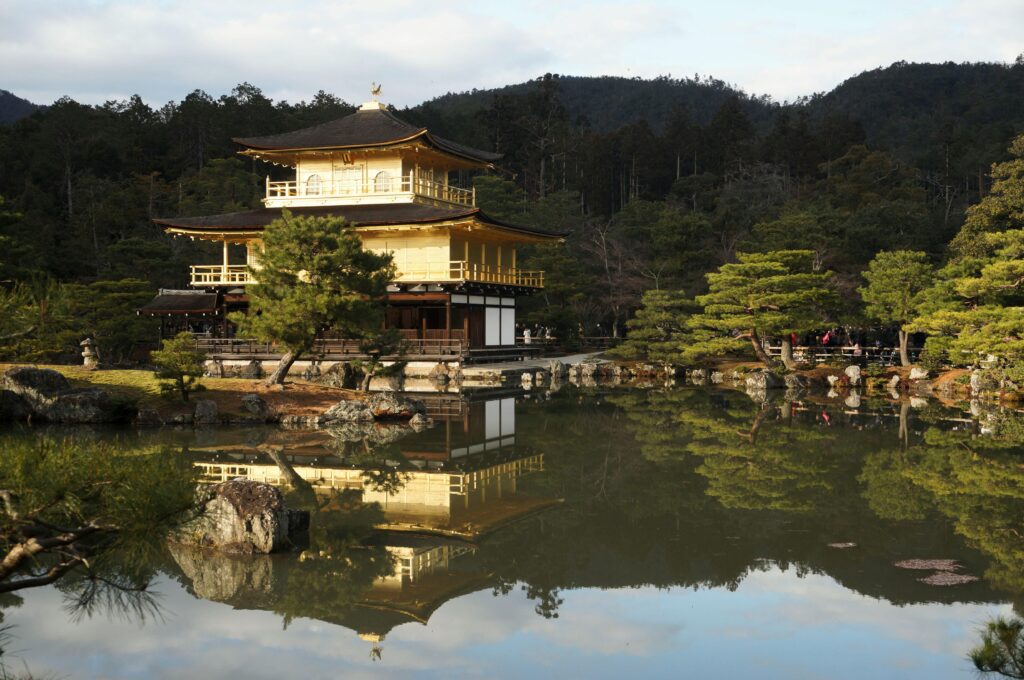
Tip #12: Depending on the establishment you are entering, you might need to take off your shoes. If you wear sandals, we recommend keeping socks on hand.
Tip #13: You’ll find that many pedestrians walk on the left, especially in Tokyo. However, in a few regions, like Osaka, people walk on the right. Many people follow this rule, so try not to walk on the “wrong” side of the street. On escalators, people stand on the left and walk on the right, except in Osaka where the reverse is true.
Tip #14: On trains, it’s customary to take off backpacks and put them in front of you or on the overhead rack. In Japan, trains are often crowded, especially during rush hours.
To avoid bumping into others or taking up extra space, it’s polite to remove your backpack and hold it in front of you or place it on the overhead rack. This ensures that you aren’t inadvertently hitting other passengers with your bag, making the journey more comfortable for everyone.
It’s also important to keep your voice down while on the train. Japanese trains are generally very quiet, with most people refraining from talking loudly or making phone calls.
If you need to speak, do so in a low voice to avoid disturbing other passengers. Silence your phone or set it to vibrate mode, and avoid playing music or videos without headphones.
Respecting personal space is crucial on Japanese trains. Avoid spreading out your belongings or taking up more than one seat. If the train is crowded, make yourself as compact as possible to allow room for others.
When seated, keep your legs and arms within your own space. If you’re standing, be mindful of where you hold on and avoid leaning on other passengers.
Tip #15: Japan has strict privacy laws, so please refrain from taking pictures or videos of others without their permission (especially Geisha and kids).
Tip #16: When using chopsticks, do not gesture with them or stick them straight up in food. Sticking chopsticks straight up in food resembles a funeral practice where chopsticks are placed upright in rice. Passing food from one pair of chopsticks to another is also taboo because it mimics a funeral ritual involving the passing of bones.
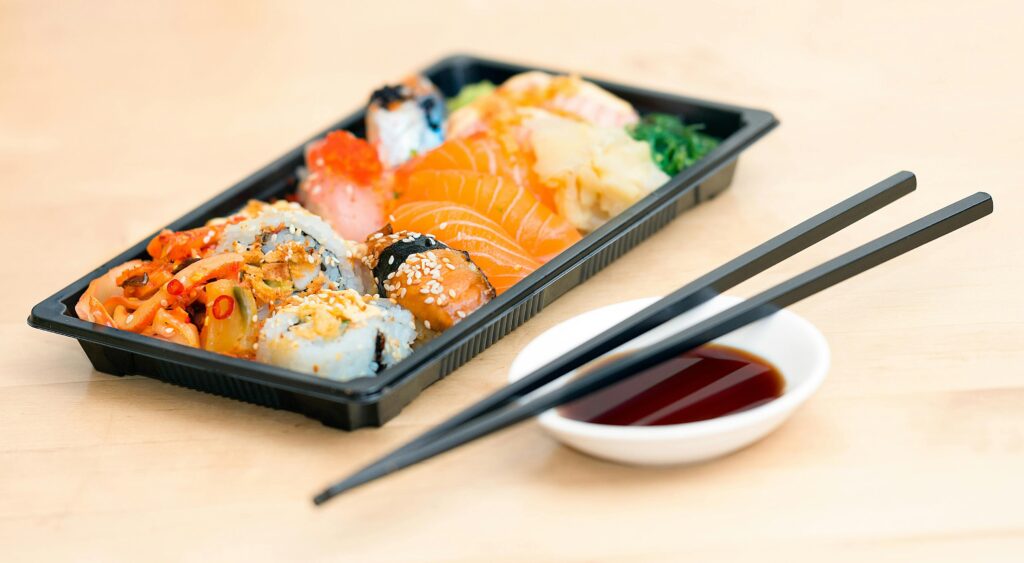
Tip #17: There are few public trash cans on the street; so, it’s customary to keep your trash with you. Public trash cans can be found at some stations, convenience stores, and many vending machines have nearby recycling bins.
The scarcity of trash cans is both a security measure (heightened partly due to a sarin gas attack that happened in the Tokyo subway in 1995) and a reflection of a cultural aversion to littering.
We recommend carrying a small bag for your trash until you find an appropriate disposal spot.
Tip #18: In certain settings, such as traditional restaurants, tea ceremonies, or when visiting a ryokan (traditional inn), you may be expected to sit on the floor. In these cases, it is customary to sit on your knees, or “seiza.”
In more casual settings, like some casual restaurants or home visits, you can sit cross-legged or with both legs to one side.
Tip #19: In Japan, the first name follows the family name. The Japanese commonly address each other by last name. Only close friends and children are usually addressed by first name.
Tip #20: A tatami is a type of straw mat used as a flooring material in traditional Japanese-style rooms. Do not walk on tatami with shoes, as it is very rude.
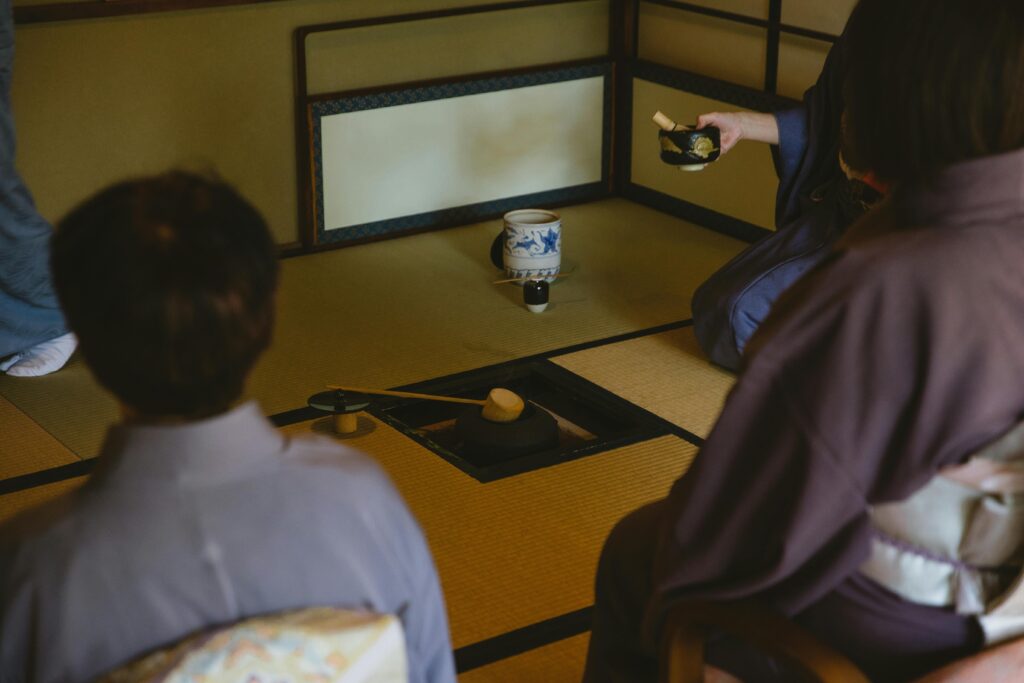
Tip #21: Since paper towels or dryers are not always available in public restrooms, it is recommended to carry a handkerchief. It can easily be bought at a 100-yen shop and makes a great souvenir!
Tip #22: Enjoying “onsen” (or hot springs), is a relaxing way to immerse yourself in Japanese culture. To have a wonderful experience dipping in hot springs, know these things beforehand:
- It is normal practice for people to bathe naked in the public onsen baths. Use of bathing suits is not allowed unless stated otherwise.
- Some onsen are available to privately rent.
- It is common practice to wash your body and hair first using the showers available and then get into the baths to relax.
- Jewelry and accessories should be removed before heading into the baths. long hair should be tied up so that it does not dip into the bath water.
- Although changes are being seen, guests with tattoos are still refused entry to many public baths. If you have a small tattoo, we recommend covering it with some skin tape in order to hide it. It is best to double check with the onsen beforehand.
- Baths are usually gender segregated.
- Do not run or shout in the baths as it is meant to be a relaxing atmosphere.
- Since the onsen uses natural hot spring water, it can get very hot. Be careful not to get dizzy!
- Natural hot spring water contains various elements like sulfur, making the water appear cloudy. This is not a sign of uncleanliness but rather a natural occurrence due to the mineral content.
Tip #23: Still on the topic of onsens, here are the types of traditional baths you can enjoy:
- Indoor Baths・Uchiburo: Indoor baths are the most common hot spring type. They range from traditional wooden to elegant modern facilities and from tiny spaces with a single tub to expansive bathing areas with several different types of baths.
- Outdoor Baths・Rotemburo: Many hot spring bathing facilities also offer one or more outdoor baths, though the the term “outdoor” can be interpreted differently depending on the location. Sometimes this means the baths might be completely exposed to nature, while in other cases just one side is covered by a roof.
- Private Baths or Family Baths・Kashikiriburo or Kazokuburo: Private baths or “family baths” are sometimes available for use by families, couples and other small groups who want to bathe together. Please keep in mind that many private baths must be reserved and may require a fee to use (typically about 2000-3000 yen for around 40 minutes). Some luxury accommodations offer private onsen baths in their guest rooms.
- Mixed-Gender Baths・Konyoku: While most hot spring baths are gender-separated these days, there still exist some mixed-gender baths here and there, especially in more traditional and remote places. While some of these baths adhere to the tradition of full nudity, many of them allow or even request bathers to use some kind of towels or robes for enhanced privacy.
- Waterfall or Beating Baths・Takiyu or Utaseyu: These are waterfalls or spouts of hot spring water, which are designed to fall from a height to comfortably massage the shoulders of the bather below them. They are a popular feature in larger bathing facilities.
- Foot Baths or Ashiyu: Foot baths are shallow hot spring baths with benches or similar seating for foot bathing. They are often found along the streets of hot spring resort towns and are typically free to use.
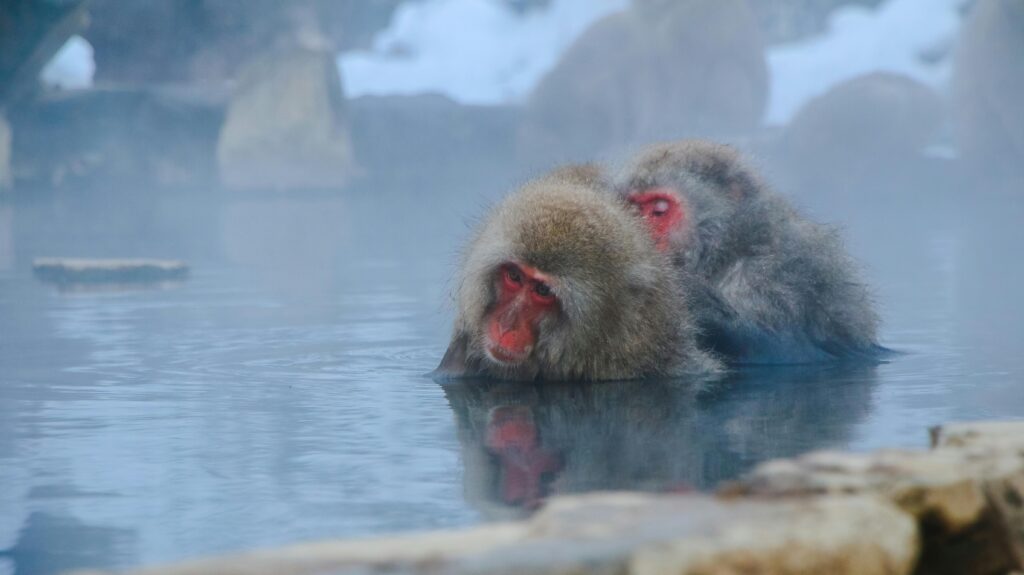
Tip #24: Japanese onsen are frequently confused with “sento”, baths filled with artificially heated water, and “ofuro”, private soaking tubs made from materials like cypress or basalt stone. However, traditional onsen are naturally-source hot springs.
Tip #25: Japan is a foodie’s mecca, and your options for grubs are practically endless. However, it could be helpful to know that these dishes and drinks that are commonly found in Japanese restaurant menus:

Packing Tips
In this section, let’s chat about packing tips to make sure you’re all set for your Japan trip. We’ll cover essentials like comfy shoes for temple visits and other must-haves recommended by Flip Japan Guide. Let’s get you packed and ready to go!
Tip #26: To prepare for your trip to Japan, go over this list of items Flip Japan Guide recommends you bring:
- Comfortable walking shoes that you can take on and off easily. Sometimes you will need to take off your shoes when visiting a temple or shrine, so please bring some socks each day if you plan to wear sandals or open-toed shoes.
- Cash, as Japan is still a cash-based society. You can use credit cards at major shops, and ATMs are readily available in most convenience store and post offices. VISA and Mastercard are widely accepted.
- Light luggage. If you are planning to travel on trains with your main luggage, we recommend to pack as lightly as possible so it is easier to get around the train stations. Packing light is also recommended as there are many things to shop for in Japan. Buying a duffle bag or a suitcase of different sizes is super easy. You can do it at Donki or other stores.
- Extras like a handkerchief and hand sanitizer as public restrooms often lack soap and/or hand towels.
- A travel adapter since most of Japan’s electrical outlets are 2-pronged “Type A” (100 Volt, 50-60 Hz).
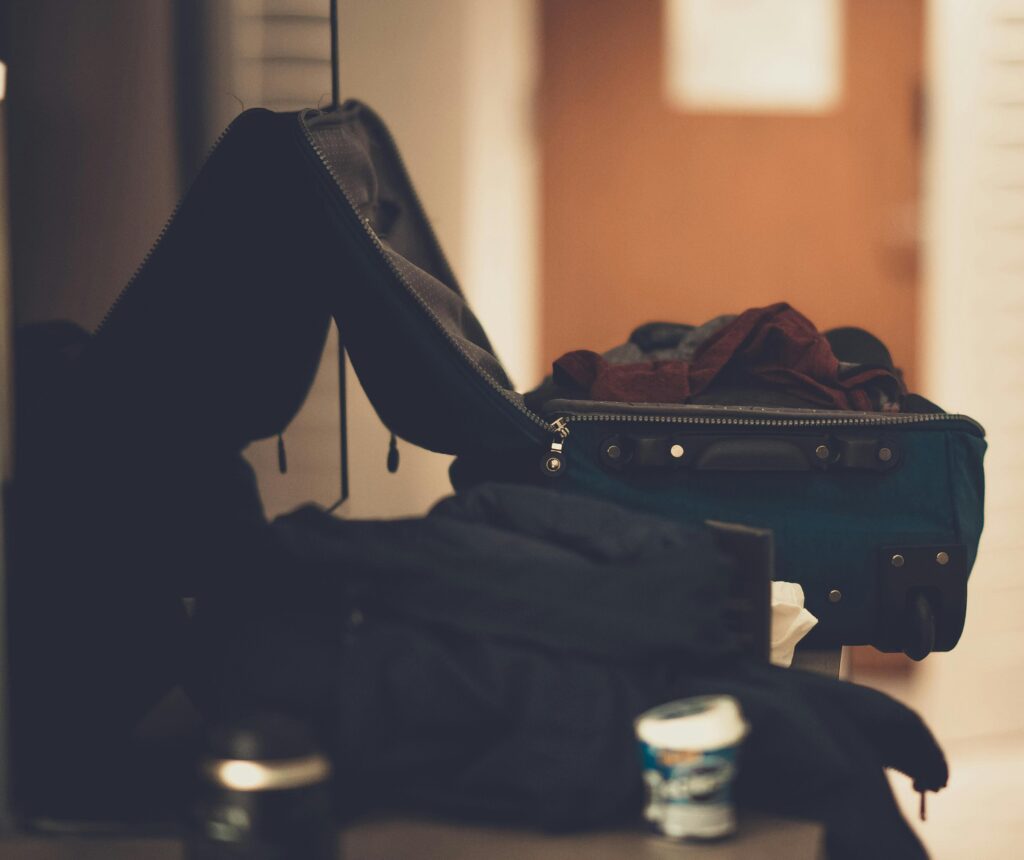
Tip #27: If you are traveling during winter when the weather gets cold, the following items are useful to bring:
- Warm clothing, such as heavy sweaters, thermal layers and a thick coat.
- Insulated, waterproof boots for snow and rain.
- Thermal socks and gloves to keep extremities warm.
Tip #28: If you are traveling during spring when the weather gets sunnier and warmer, the following items are useful to bring:
- Light layers.
- A light jacket.
- Waterproofs for unexpected showers in May.
Tip #29: If you are traveling during summer when the weather gets hot and humid, the following items are useful to bring:
- Comfortable and light clothing that wicks sweat easily.
- Sunscreen and sun protection.
- A portable fan and hand towel.
- Waterproofs for typhoon season (peak months for typhoons are August and September).
Tip #30: If you are traveling during autumn when the weather gets cooler, the following items are useful to bring:
- A mix of long-sleeved shirts, sweaters, and light jackets for layering.
- Pants, jeans, or skirts along with tights or leggings for added warmth.
- A light coat or jacket is recommended, especially in the later months.
Tip #31: For a more detailed list of things to pack, be sure to give this Flip Japan Guide blog post a read.
Tip #32: To have more opportunities to interact with the locals and easily find your way around, practice these basic Japanese phrases:
- Konnichiwa (こんにちは) – Hello
- Arigatou gozaimasu (ありがとうございます) – Thank you
- Sumimasen (すみません) – Excuse me
- __ o Kudasai (__をください) – I would like __, please
- __ wa doko desu ka? (__はどこですか) – Where is __?
- Itadakimasu (いただきます) – An expression of gratitude for the meal you’re about to eat
- Osusume de onegaishimasu (おすすめでお願いします) – Used to order the staff’s recommendation
- O-sake (お酒) – General term for alcohol
- Nihonshu (日本酒) – Japanese sake
- Kinen seki (禁煙席) – Non-smoking seat
- Ima nanji desu ka? (今何時ですか) – What time is it now?
- Nanji ni? (何時に?) – At what time?
- Asa (朝) – Morning
- Kyou (今日) – Today
- Ashita (明日) – Tomorrow
- __ ni Ikitai (__に行きたい) – I want to go to __
- Tomete kudasai (止めてください) – Stop, please (for taxis)
- Kippu (切符) – Ticket
- Shinkansen (新幹線) – Bullet train
- Dono Densha? (どの電車?) – Which train?
Tip #33: The above list too short to short and easy? If you are eager to ramp up your Japanese skills before the trip, check out the links below to access useful resources and pick up a few more helpful phrases before your trip.
- Daily Phrasebook – Useful for everyday
- Nightlife Phrasebook – Useful for going out
Tip #34: To perfect your pronunciation of the Japanese words and phrases you just learned, watch these videos:
- Japanese Travel Phrases – Useful for travelling around the country
- Japanese Phrases for Travellers & Japan Nightlife – Useful for getting the most out of Japan nightlife
Tips Related to Transportation and Getting Around
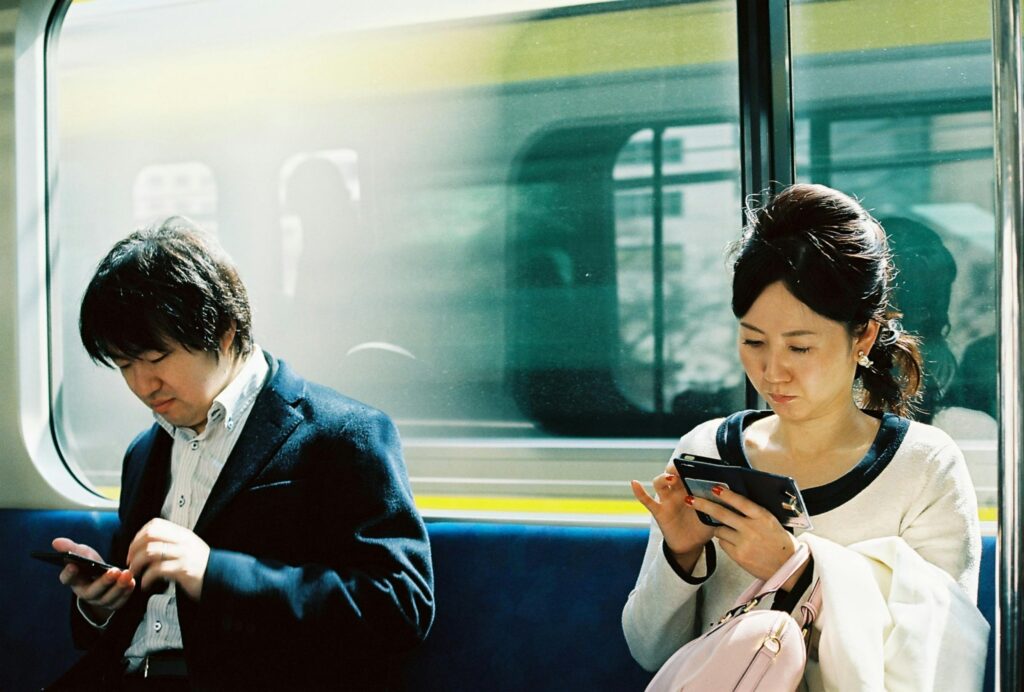
The following tips are your ticket to navigating Japan like a pro and ensuring you don’t lose your way while exploring this amazing country.
Tip #35: Taking the train is the most common and popular way to get around. The shinkansen—the famous bullet train—is the fastest way to travel from city to city.
Tip #36: Subway trains run within major cities and are the most convenient to travel within cities. There are many different subway lines within the major cities.
However, keep in mind that trains do not run all night. Most services stop around midnight and resume early in the morning. Plan your late-night activities accordingly to avoid being stranded.
Tip #37: Overnight buses are a more affordable alternative to bullet trains or planes when travelling city to city.
Tip #38: Taxis in Japan are more expensive than other modes of transports but are a good option for hotel or airport pick ups/drop offs, or after the trains have stopped running.
Tip #39: There are countless things between stations and major areas, and taking a walk will allow you to see and experience those lesser-known places.
Tip #40: Japanese people love using bicycles as a way to cut transportation costs. It is also a great way to get some exercise while enjoying the city.

Tip #41: Google Maps stands out in Japan due to its accuracy and wealth of information. You can easily assess if taking a taxi might be a smoother option, as it shows estimated trip costs and durations, aiding in making an informed decision.
It’s incredibly comprehensive in calculating the overall expenses for multi-modal travel, including buses and trains, making budgeting a breeze even with numerous transfers. Even if you miss a train, Google Maps updates in real-time, swiftly redirecting you to the next available option, ensuring minimal disruptions to your journey.
Moreover, its door-to-door guidance is remarkable, not just for finding specific landmarks or restaurants but also suggesting the most suitable station exit and train car, streamlining your travel experience in Japan.
Tip #42: Most shinkansen, or bullet trains, in Japan offer seats in different classes, which are typically found in separate cars. The different types of seat classes are:
- Ordinary (Standard) Class: Ordinary seats are the regular seats found on all bullet trains, or “shinkansen” in Japanese. Although the size and foot space of these seats varies between train sets, ordinary seats on shinkansen are generally comfortable and offer a generous amount of foot space.
- Green Car (First) Class: Considered first class (similar to business class on airplanes), green cars offer seats that are larger and more comfortable than ordinary seats and offer more foot space. An added bonus, Green Cars tend to be less crowded than ordinary cars with plenty of luggage space.
- Gran (Luxury First) Class: Gran Class is available on new train sets along the Tohoku Shinkansen, Hokuriku Shinkansen, Joetsu Shinkansen and Hokkaido Shinkansen. Comparable to first class on airplanes, Gran Class offers seats that are even more spacious and comfortable than Green Car seats as well as come with additional amenities and services.

Tip #43: Most shinkansen trains offer both non-reserved seats (自由席, jiyuuseki) and reserved seats (指定席, shiteiseki) in separate cars.
Only the Hayabusa, Hayate, Komachi and Tsubasa trains on the Tohoku Shinkansen and Hokkaido Shinkansen and the Kagayaki trains on the Hokuriku Shinkansen are fully reserved and do not carry non-reserved seating.
In addition, Nozomi trains along the Tokaido/Sanyo Shinkansen become temporarily fully reserved during the New Year, Golden Week and Obon holidays.
All seats in Green Cars are reserved. Bilingual signs indicate whether a car carries reserved or non-reserved seats. Advance seat reservations are required to use a seat in a reserved car (see below on how to make seat reservations).
A fee of a few hundred yen applies for making seat reservations. Japan Rail Pass holders can make seat reservations for free.
Tip #44: Most standard suitcases will fit in front of you, as bullet trains come with plenty of legroom and an overhead compartment. You may bring up to 2 baggage items with a total length, width, and height of up to 250 cm (up to 2 meters in length) and a weight of up to 30 kg.
However, it is recommend to reserve a seat with an oversized baggage area or oversized baggage compartment when carrying on oversized baggage. See more information on this topic here: https://www.westjr.co.jp/global/en/howto/baggage/
Tip #45: Get yourself an IC Card to easily navigate the city. These transport cards can be used on most local trains, metro, buses and taxis across the country, as well as at select vending machines, many convenience stores, and even some restaurants. Keep an eye for any of the IC logos. The cards can be charged at most train stations or convenience stores all across Japan.
Tip #46: Depending on how extensively you’ll be travelling around the country, look into getting a JR Pass. This pass can be used on most bullet trains, JR express and local trains. While the pass is valid on most bullet trains, it does not cover the Nozomi and Mizuho trains.
To help you decide whether you need a JR Pass, learn more about who can get it, what classes and duration are available, and so on by checking out this Flip Japan Guide blog post.
Other than the JR Pass, other passes may make more sense for you to use, depending on where you’ll be travelling. So, also look into:
- TokyoWidePass: The JR Tokyo Wide Pass is a rail pass for exclusive use by non- Japanese passport holders, providing unlimited travel on JR trains (including shinkansen and limited express trains) and selected non-JR trains in the Kanto Region around Tokyo on 3 consecutive days.
- KansaiWidePass: The JR Kansai Wide (Area) Pass is a rail pass for exclusive use by foreign tourists, providing 3 consecutive days of unlimited travel on designated train and bus lines (including shinkansen and limited express trains) in the Kansai Region.
- Hakone Free Pass: A 2-3 day pass from Odakyu Electric Railway for travel across 8 different transportation systems in the Hakone hot spring region. Find more details here: https://www.odakyu.jp/english/passes/hakone/.
- Odakyu Passes: Odakyu also has other pass options that are perfect for day trips around the Kanto are. Find more details here: https://www.odakyu.jp/english/passes/
- Other Japan Rail Passes: JR has several great value tickets for traveling all over Japan. Find more details here: https://www.jreast.co.jp/multi/en/pass/
Tips for After Arriving in Japan

Congratulations! You’ve finally arrived in the land of ninjas, geishas, samurais, and anime! Here are a few tips to make sure your adventure is smooth-sailing.
Tip #47: There are so many delicious and different food options, ranging from traditional Japanese cuisine to adaptations. of popular foods from overseas. The above examples are just to name a few.
Outside high-end and casual restaurants, there is a wide variety of street foods to try across the country. Independent and chain restaurants can be found everywhere and many cities will have dedicated areas for street food, bars, and Japanese pubs called “Izakaya” that offer drinks and light food options.
For snacks, drinks, and even meals, you can visit convenience store chains such as Seven-Eleven, Family Mart, and Lawson. Supermarkets also sell ready-to-go meals, but may be more difficult to find. in very rural areas.
Tip #48: The legal drinking and smoking age in Japan is 20.
Tip #49: Drugs are illegal in Japan and punishment for possession is very strict, including arrest, and deportation.
Tip #50: Japan has strict laws on jaywalking. The penalties for ignoring traffic signals, including pedestrian crossing lights, may be up to three months in prison and a fine of ·50,000. That’s quite a lot of money to pay just for crossing the street, so it’s better to just follow the rules!
Tip #51: When visiting the beach, be mindful of the local rules and regulations. Each beach in Japan may have its own set of rules regarding activities such as drinking, playing loud music, or lighting bonfires.
Zushi Beach, for example, a popular daytrip from Tokyo, does not allow alcoholic drinks, setting up of grills for barbecue, or playing loud music, and even directs tattooed visitors to cover their ink.
Some beaches may prohibit these activities to maintain a peaceful environment for all visitors. Always check the specific regulations of the beach you are visiting to ensure a respectful and enjoyable experience for everyone.
Also, do not touch or remove coral, fish, or other sea life.
Tip #52: Never pick flowers, tree branches, or take wild grass as a souvenir. This is particularly important with cherry blossoms, as they are very fragile. Once a branch is damaged, the tree will not bloom again in that area.
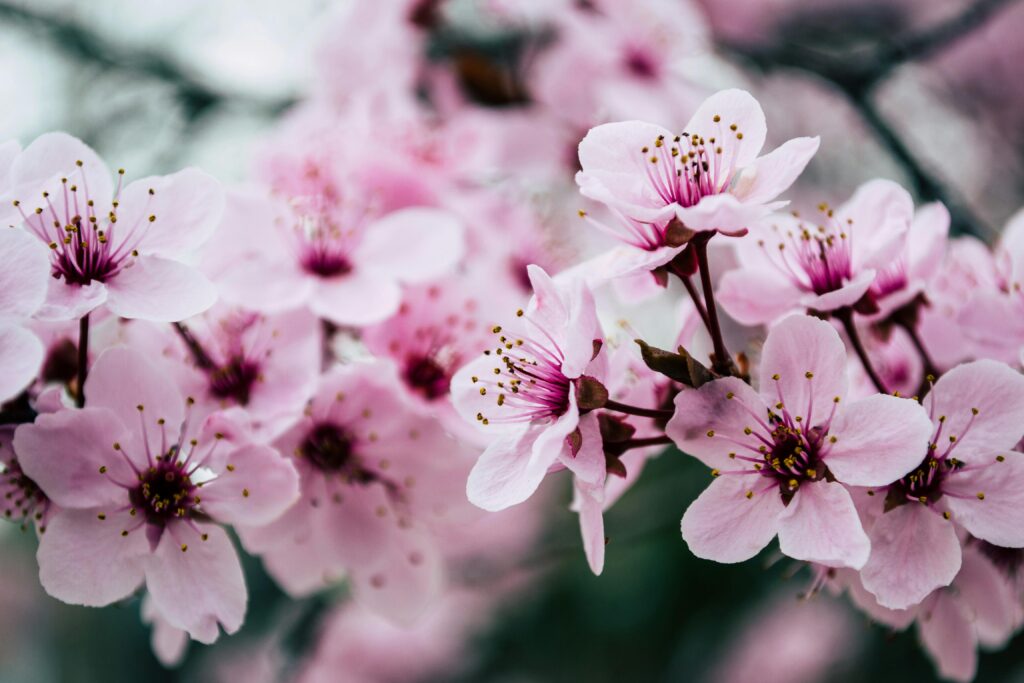
Of course, do not harm wild animals.Respecting the natural environment helps preserve these beautiful sights for future visitors.
Tip #53: Import and export of ivory is prohibited by law in Japan
Tip #54: Any sword, even a fake replica, that has a length of above 15 centimeters, is strictly prohibited to either be possessed or carried.
Tip #55: Japan has strict regulations regarding drone usage. Flying drones in certain areas, such as near airports or densely populated areas, is prohibited. Always check and adhere to local regulations before operating a drone.
Tip #56: In Japan, the cancellation policies can be strict. This is to ensure that your reservation is set, but also ensure that all the costs of materials and/or preparation for the reservation do not go to waste. Often the fee for no-shows or cancelling a day or two before can be up to 100% of the meal, accommodation, or experience costs. Please note that cancellation policies vary by restaurant, accommodation, and experience provider.
Tip #57: Please note that some accommodations in Japan charge an Accommodation and Bathing Tax directly to guests during check out. This fee can vary from JPY 100 – 500 per person per night depending on the accommodation.
Area Tips
From the snow-capped peaks of Hokkaido to the sun-drenched beaches of Okinawa, here’s your primer to the different regions of Japan.
Tip #58: Japan’s geography is characterized by a series of islands located in the Pacific Ocean, forming an archipelago that includes four main islands—Honshu, Hokkaido, Kyushu, and Shikoku—as well as numerous smaller islands, with a diverse landscape of mountains, forests, coastal regions, and fertile plains. Home to over 6,000 islands, with the main island, Honshu, being the largest and most populated, the country is divided into the following 8 regions:
Hokkaido
- Hokkaido Prefecture
- Tohoku
- Aomori Prefecture
- Iwate Prefecture
- Miyagi Prefecture
- Akita Prefecture
- Yamagata Prefecture
- Fukushima Prefecture
Kanto
- Tokyo Prefecture
- Ibaraki Prefecture
- Tochigi Prefecture
- Gunma Prefecture
- Saitama Prefecture
- Chiba Prefecture
- Kanagawa Prefecture
Chubu
- Niigata Prefecture
- Toyama Prefecture
- Ishikawa Prefecture
- Fukui Prefecture
- Yamanashi Prefecture
- Nagano Prefecture
- Gifu Prefecture
- Shizuoka Prefecture
- Aichi Prefecture
Kansai (formerly Kinki)
- Hyogo Prefecture
- Nara Prefecture
- Mie Prefecture
- Shiga Prefecture
- Wakayama Prefecture
- Osaka Prefecture
- Kyoto Prefecture
Chugoku
- Tottori Prefecture
- Shimane Prefecture
- Okayama Prefecture
- Hiroshima Prefecture
- Yamaguchi Prefecture
Shikoku
- Tokushima Prefecture
- Kagawa Prefecture
- Ehime Prefecture
- Kochi Prefecture
- Kyushu & Okinawa
- Fukuoka Prefecture
- Kumamoto Prefecture
- Nagasaki Prefecture
- Oita Prefecture
- Saga Prefecture
- Kagoshima Prefecture
- Miyazaki Prefecture
- Okinawa Prefecture
Tip #59: Places like Tokyo, Kyoto, and Osaka are frequently visited for their cultural and historical significance, while Hokkaido and Okinawa offer unique natural landscapes..
Tip #60: Be mindful of weather patterns and seasonal changes when planning your visit. For example, Hokkaido is known for its heavy snowfall in winter, making it a popular destination for skiing and winter sports. Also, consider the accessibility of certain regions during specific times of the year. For instance, mountainous areas like the Japan Alps may be difficult to access during winter due to heavy snowfall, while coastal regions may experience typhoons during summer and early autumn.
Ready, Set, Japan
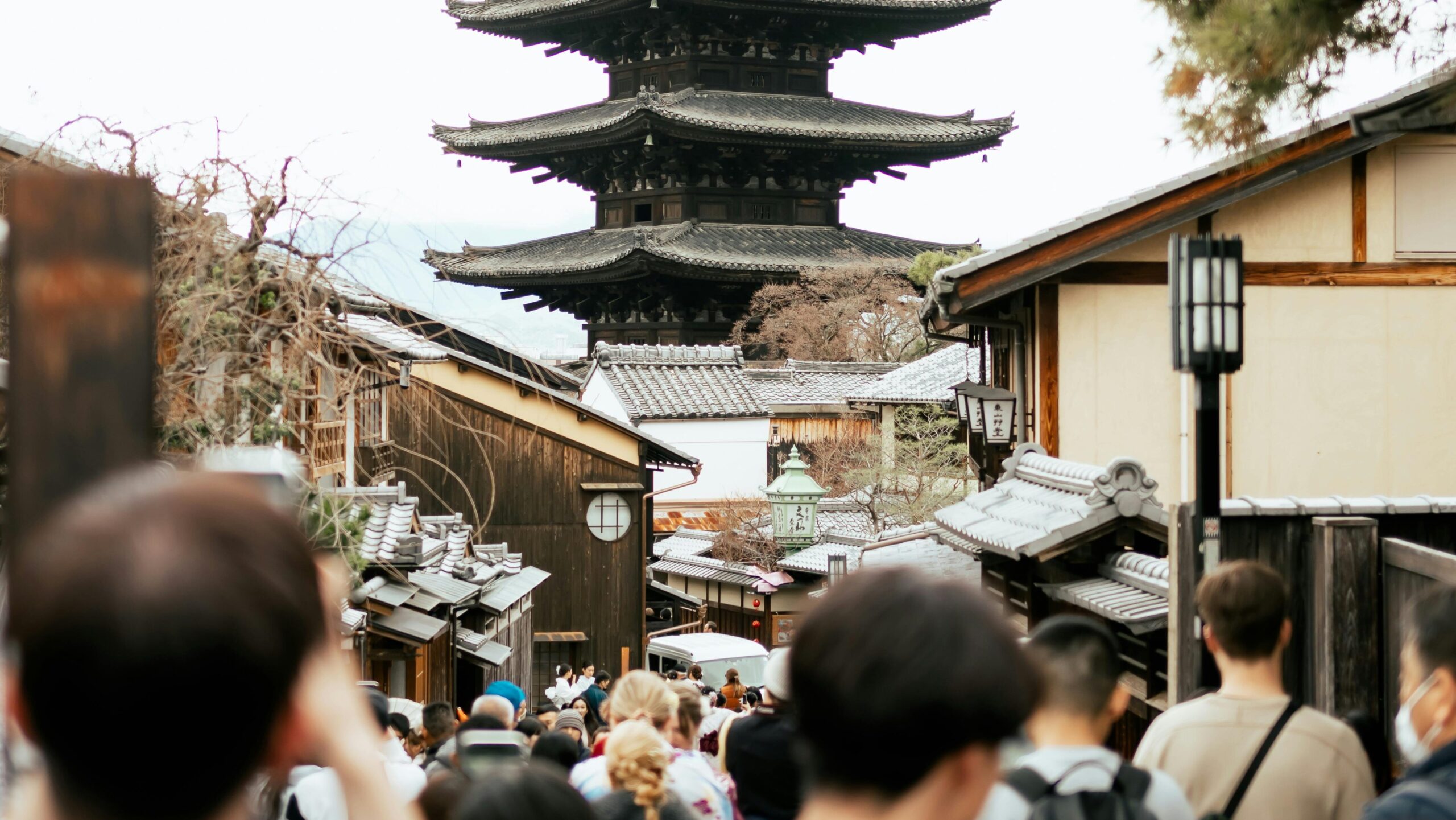
As your adventure to Japan beckons, armed with the promise of a favorable exchange rate and boundless opportunities for exploration, it’s essential to be equipped with more than just yen in your wallet. We hope this guide has helped you prepare for your trip to Japan and that you will apply the tips here.
Here’s to an adventure filled with joy, discovery, and memories that will last a lifetime. Safe travels, and konnichiwa, Japan awaits!”



